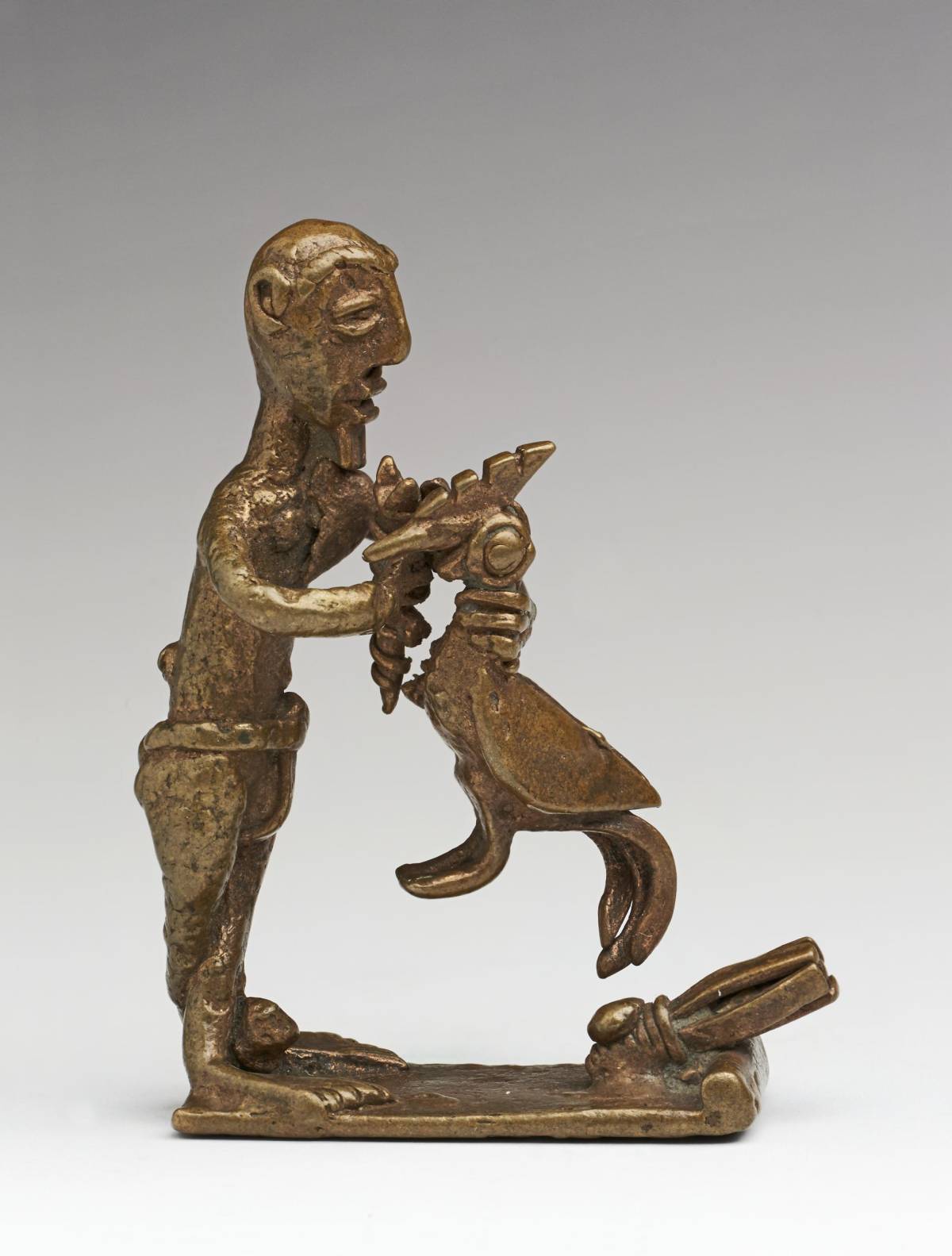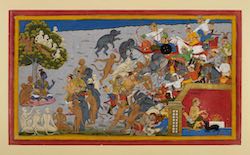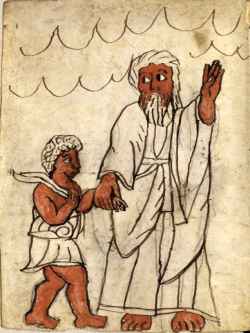a man sacrificing a fowl to one of the best known charms among the Akan, the nkabere charm.
Year: 18th-20th
From: Ghana (The Kyekyere Nkabere charm (lit. to tie or bind the nkabere) was a common rite carried out throughout the Asante region during the pre-colonial and early colonial era).
Location: British Museum, London
External link: www.britishmuseum.org
Keywords: AfricaAnimal Sacrifice
Edited by: Chiara Petrolini
Related Documents:
Rāma sends out his entire army, headed by Lakṣmaṇa and Vibhīṣaṇa, to fight Indrajit at the Nikumbhilā grove, where he is performing more magical sacrifices. Indrajit is sacrificing to the fire again with a black goat, while around him a furious battle is raging between Lakṣmaṇa and his allies and the other demons. Vibhīṣaṇa has advised Rāma to send Lakṣmaṇa to finish off Indrajit at the place where he is performing his magical arts, before he can make himself even more powerful. Inscribed above Indrajit: Iṃdrajit. (ca 1653)
from: Ramayana [ms Add. 15297(1), fol. 115]
British Library, London [from Udaipur]
Religious practices of the native Americans of Peru. Priests sacrifice animals on a bonfire, throw rocks with serpents or snakes and animals painted on them, and eviscerate animals. (1671)
from: Arnoldus Montanus, De Nieuwe en Onbekende Weereld, Amsterdam, Jacob Meurs, 1671, p. 309
John Carter Brown Library
Symboliques et rituels de la protection. Le sacrifice tcargîba dans la société maure
in: Sacrifices en Islam: Espaces et temps d'un rituel, pp. 239-261
: , 1999.
Abraham leading Isaac to the sacrifice (Ethiopian manuscript) [1800-1890]
Paris, BnF, Ms Ethiopien 389, fol. 9v
Scene of cow sacrifice on a relief brass plaques (16th-17th)
from: Benin City, Nigeria
British Museum, London





